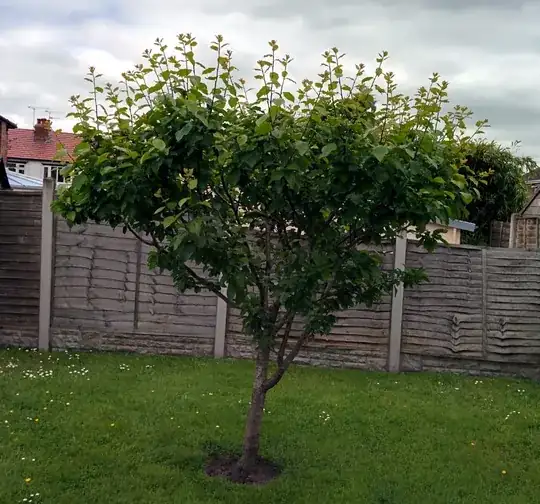I have a plum tree that is around six years old (possibly a year or two older - I forget exactly when I got it). I'm very keen that the tree not get so big that I have to use a ladder to pick the fruit, so I've been pruning it to keep it around two metres high. This is what it currently looks like (the tree isn't leaning, that's my bad camera work :-):
The instructions I got from the friend who gave it to me were to thin out the centre and remove overlapping branches so the shape is sort of like an inverted cone. This I've been doing and I'm basically pleased with the shape so far.
The problem is that I get very few flowers and plums. I know it's quite a young tree but I was expecting a bit more fruit by now. I wonder if it's my pruning that's to blame. The trouble is that to keep the tree size down I have to remove most of the new growth each year, and some Googling suggests it's on last years new growth that the plums appear. If this is true I'm sabotaging the tree's attempts to fruit.
I'd be grateful for any comments on how to encourage the fruiting and/or advice on looking after the tree and how to keep it at a manageable size.
